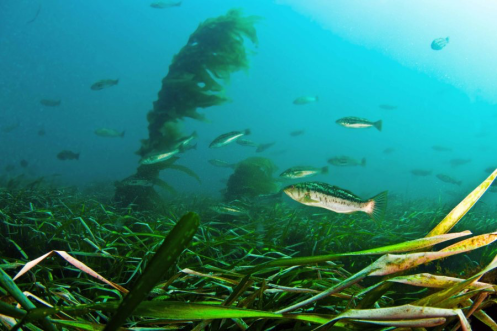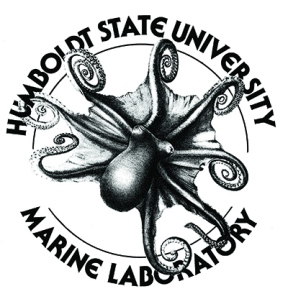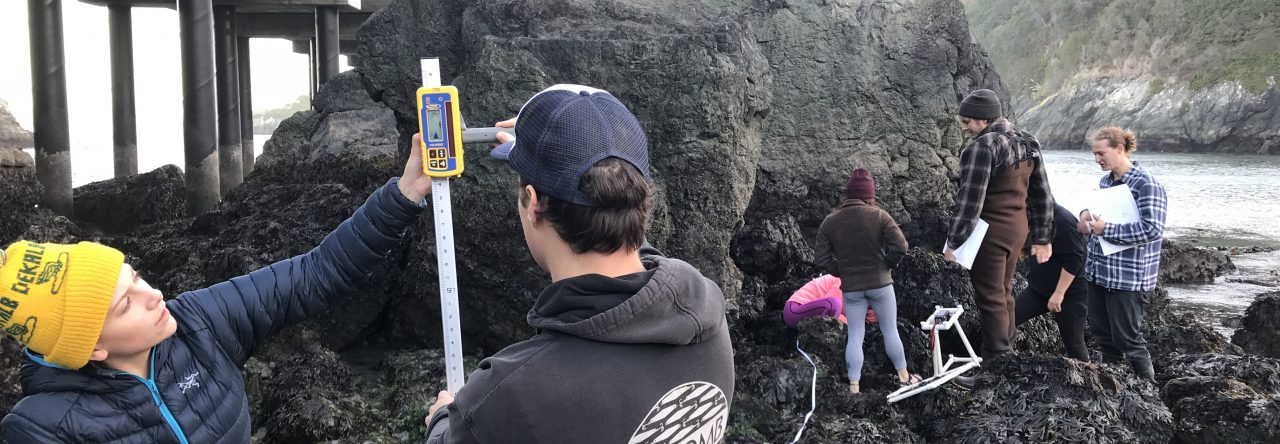When you think of the ocean, some may imagine the endless blue, or crashing waves, and some may think of schooling fish, or a colorful coral reef. The oceans are vast, and largely mysterious. There are approximately 2.2 million (±0.18 million SE) species of marine plants and animals living in the world’s oceans, from tiny plankton and algae to the great blue whales; that’s around 25% of known life (Mora et. al 2011)! Even with such a high number of known species, it’s estimated up to 91% of species living in the seas are yet to be described. Large or small, everything has a role to play in the marine ecosystem. Most of us may never see or even hear of the majority of the life in the ocean, and still more of us will see the same life everyday but underestimate its majesty or importance.
Some of the most vibrant ecosystems on Earth are the coral reefs, which cover approximately 0.2% of the oceans’ area, but are home to 10% of species. Because they house so much life, these systems are distinctly important for their roles in research, tourism, fisheries, and ecologically for their role as ecosystem engineers. An ecosystem engineer is an organism that directly alters the physical environment around them in such a way that modifies, maintains or creates habitat (Jones et. al 1994). A common example is the beaver, which is known as a “allogenic” ecosystem engineer because they

change the environment by altering the state of non-living or living materials, like trees to build dams; conversely, corals are considered “autogenic” ecosystem engineers in that they use their own dead or living tissue to create structure for marine organisms to congregate and live in (Jones et. al 1994). It is important to note that a coral is not an ecosystem engineer because it provides living or dead tissue to other organisms directly as food for instance, but because the presence of these tissues changes what resources are available as well as the local physical conditions. Corals are particularly adept at settling in nutrient poor areas, where they foster vital communities in otherwise low productivity areas.
A second, perhaps publicly overlooked ecosystem engineer is eelgrass. Eelgrasses are a flowering plants that form vast meadows and are estimated to make up around 177,000 square meters of known coastal environments where they grow (Spalding 2003). Eelgrasses are critical because they provide habitat (especially for larval stages), store carbon, stabilize sediment, and cycle nutrients in nearshore environments across the globe (Waycott et al. 2009). Seagrasses like Zostera marina are particularly important as they form some of the most productive environments on Earth, and similar to corals, they are autogenic ecosystem engineers.

- Figure 2. An Eelgrass meadow. Photo Credit: https://www.westcoast.fisheries.noaa.gov/stories/2014/04_11072014_eelgrass_mitigation.html
Unfortunately, both seagrasses and corals are highly vulnerable to environmental changes. Global seagrass and coral ecosystems have seen concerning declines due to a variety of environmental developments, many of which are related to the proximity of humans (e.g. overexploitation, physical modification, nutrient and sediment pollution, introduction of nonnative species, and global climate change) (Waycott et al. 2009). These ecosystems are of critical importance not only because the seagrasses and corals themselves are threatened by these changes, but because they are ecosystem engineers, whatever affects them will affect countless other organisms who rely on them.
References
Jones C.G., Lawton J.H., Shachak M. (1994) Organisms as Ecosystem Engineers. In: Ecosystem Management. Springer, New York, NY
Mora, C., Tittensor, D. P., Adl, S., Simpson, A. G., & Worm, B. (2011). How many species are there on Earth and in the ocean?. PLoS biology, 9(8), e1001127.
Spalding, R. D. (2003). Global overview. The distribution and status of seagrasses. In A. W. D. Laekum (Ed.), Seagrasses: Biology, ecology and Conservation (pp. 409–439).
Waycott, M., C. M. Duarte, T. J. B. Carruthers, R. J. Orth, W. C. Dennison, S. Olyarnik, A. Calladine, et al. 2009. “Accelerating Loss of Seagrasses across the Globe Threatens Coastal Ecosystems.” Proceedings of the National Academy of Sciences 106 (30): 12377–81. doi:10.1073/pnas.0905620106.


